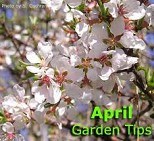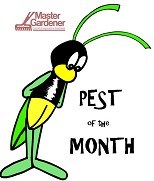With the recent floods and heavy rains many gardens have been flooded. There are many precautions that need to take place which include what vegetables/fruits need to be disguarded, what to do with the soil etc. Below are several tips from the South Dakota CCE office.
-
Soil from gardens, including unplanted gardens, that were recently flooded may not be safe for fruit and vegetables production.
-
Floodwaters may contain contaminants such as agricultural or other chemicals, as well as disease-causing organisms from fresh manure, septic systems, and even lagoons.
-
Following flooding, any leafy greens that are eaten fresh, such as lettuce or cabbage, should be destroyed. They are at risk of contamination for 90 days following a flood.
-
Leafy greens that will be cooked, such as spinach, should be cut back completely and allowed to re-grow before using. Cook them thoroughly before using.
-
Remove the blossom or set fruit from strawberry plants exposed to floodwaters. Any strawberries from these plants that are consumed within the next 90 days should be cooked before consuming.
-
Root crops should be peeled and cooked thoroughly.
-
For peas, beans, squash, or tomatoes, if their fruit is present during flooding, the fruit should be picked and discarded. Any of these vegetables that contact the ground during the 3 months following the flood should be either discarded or peeled and thoroughly cooked. Underground vegetables such as carrots and potatoes should also be peeled and thoroughly cooked. Thoroughly wash produce with thick outer rinds, such as melons and squash, before cutting open.
-
Always wash fresh fruits and vegetables before eating; wash with running water and use friction. The use of detergents or chlorine bleach is not recommended: fruits and vegetables are porous and will absorb these chemicals.
-
Some sprays approved for use on fruits and vegetables are available and may be helpful in removing debris, dirt, and surface microorganisms. If the garden produce was flooded, don’t attempt to make an unsafe flooded garden product safe by using a fruit and vegetable spray, chlorine bleach, or other product.
-
Foodborne illness has been associated with garden vegetables contaminated with floodwaters containing pathogenic bacteria, parasites, and viruses. The more common pathogens involved in these outbreaks include E. coli 0157:H7, Cryptosporidium parvum, Cyclospora, Giardia, Campylobacter, and Hepatitis A. All of these diseases make people very ill and in some instances have long-term complications or may be fatal.
-
Gardeners should not attempt to make an unsafe, flooded garden product safe by using chlorine bleach or a similar product. The level of contamination on a flooded garden can be at dangerous levels.
-
Gardeners should keep in mind that although pathogens will eventually die out, pathogens can remain present in the soil for several months. If the homeowner knows the area was contaminated with feedlot or septic overflow, it is recommended that no produce be used from the garden for 90 days. Soil or produce samples can also be submitted to a commercial testing laboratory to verify the presence or absence of pathogens.
-
Gardeners should use good personal-hygiene practices. Wash hands before and after gardening. Leave garden shoes at the door, and change clothing after working in a flooded garden. Avoid direct contact with flood waters, including the soil, as much as possible. Young children can be at a high risk for some foodborne illnesses. If a garden plot has been flooded, consider either not having young children in the garden with you or take precautions to utilize good personal hygienic practices.





